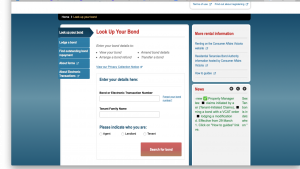Australia has long been a top choice for skilled migrants. Businesses and states are actively recruiting talent from overseas. But, a CEDA report shows that nearly a quarter of these skilled migrants work in jobs beneath their qualifications.
This mismatch means they’re often feeling undervalued, unfulfilled, and even facing discrimination—all of which can take a toll on their mental and emotional well-being. It also results in a significant economic loss, with an estimated $1.25 billion lost in potential wages.
The reality is that bringing skilled migrants here is just the first step. To truly help them thrive and make the most of their talents, we need a five-pronged approach that guides and supports them from day one so they can reach their full potential and contribute fully to our communities and economy.
Why Better Support for Skilled Migrants Matters
Supporting skilled migrants isn’t just a matter of goodwill; it’s essential to keeping Australia’s workforce competitive and diverse. With nearly 30% of the working population made up of migrants, they’re already a crucial part of our economy.
But when they’re underemployed or stuck in roles that don’t match their skills, everyone loses out—migrants aren’t reaching their potential, and employers are missing out on valuable expertise.
Better support helps migrants settle in and adapt, but it also ensures they can contribute in ways that match their training, experience, and ambitions. This, in turn, strengthens our communities, drives innovation, and fills critical gaps in the labour market.
The Five-Pronged Approach
1. Pre-arrival preparation
The journey for skilled migrants should start well before they set foot in Australia. Migrants often arrive with expertise that’s valuable but may need a bit of tailoring to fit Australian industry needs. Businesses and government agencies can play a huge role here by providing realistic insights into the job market, skill requirements, and local expectations for resumes and interviews.
Once they’re here, we need to create clear pathways to help skilled migrants bridge any gaps in their qualifications or experience. Businesses and government can partner with education providers to help migrants access courses or certifications that align with Australian industry standards. Whether up-skilling in technology, gaining industry-specific certifications, or re-skilling for emerging fields, these targeted learning opportunities can increase their employability.
We need to create clear pathways to help skilled migrants bridge any gaps in their qualifications or experience.
Robyn Vogels Tweet
2. Settlement
A positive settlement experience goes a long way in boosting migrants’ morale and confidence as they begin their new lives in Australia.
Businesses and government agencies can help skilled migrants feel welcome and prepared by creating a comprehensive Settlement Pack—a resource bundle that provides essential information about support services, local community groups, schooling options, housing, banking, and health services.
3. Workplace integration
As I previously mentioned, a critical part of successful settlement is helping skilled migrants adapt to the unique structure of the Australian workplace. Many arrive from countries with different standards or fewer protections in areas like Occupational Health & Safety (OHS), labour laws, and industrial relations.
To bridge this gap, businesses and the government can offer training on workplace rights, organisational support, union access, licensing requirements, and training in key compliance areas.
4. Cultural integration
Australia’s workforce benefits greatly from cultural diversity, yet barriers like racism, discrimination, and a lack of recognition for overseas experience can limit the potential of migrant workers.
To truly harness the value of global talent, businesses and the government need to focus on ongoing education and awareness within Australian workplaces to elevate the value of global intelligence and the diverse perspectives migrants bring.
5. Building networks
Successful integration goes beyond just finding a job—it also involves helping skilled migrants become part of Australia’s social and professional fabric. This includes providing opportunities for acculturation, where migrants can learn about and adapt to local customs and values.
Businesses and the government can also facilitate volunteering, joining community groups, and participating in local networks. This will help migrants feel more at home and connected to the Australian community.
Remember: Different People, Different Preferences
Skilled migrants process information in various ways. Younger generations may prefer videos or accessing secure portals, while middle-aged families might lean toward social media or asking within their networks for advice.
To ensure effective communication, here are some methods to deliver information:
- Books: Easy-to-carry guides migrants can access at their convenience.
- Portals: A dedicated online space for resources and helpful tools.
- Websites: A well-organised site with all the essential information they’ll need.







